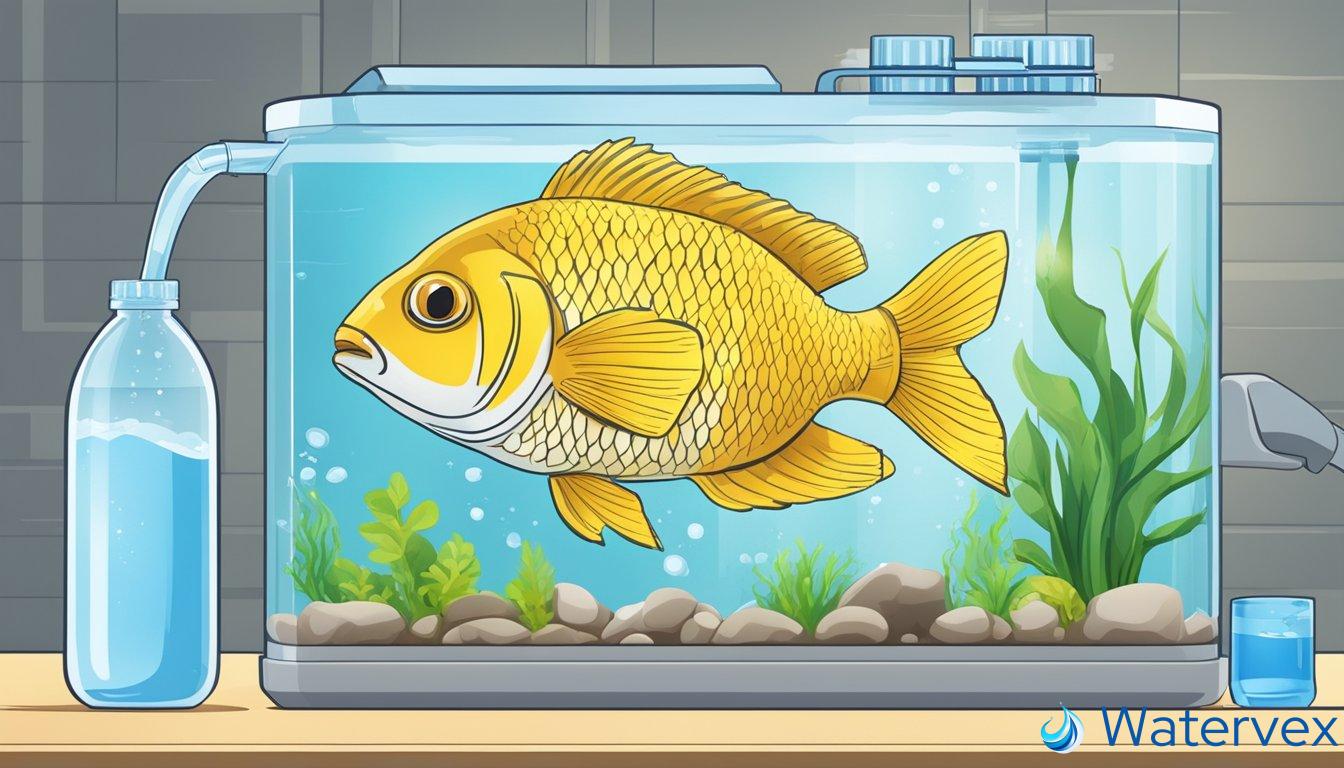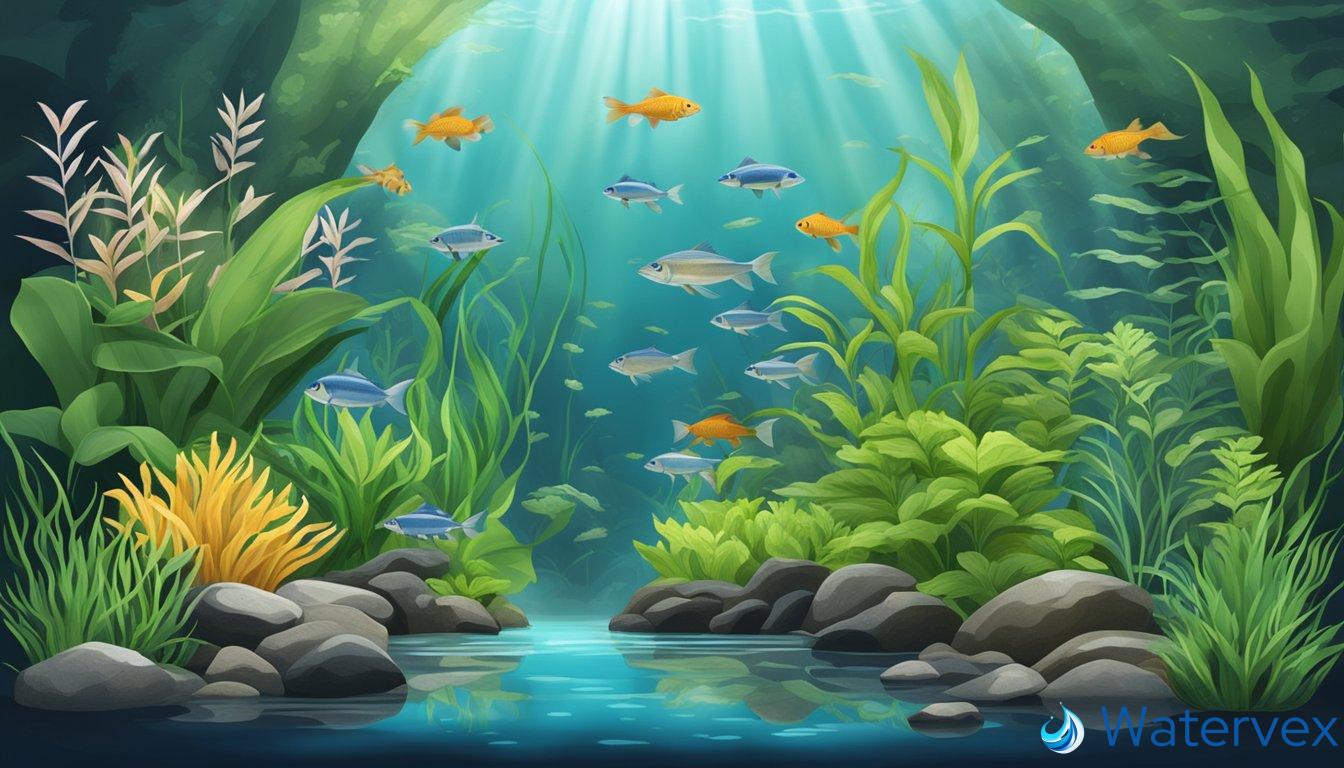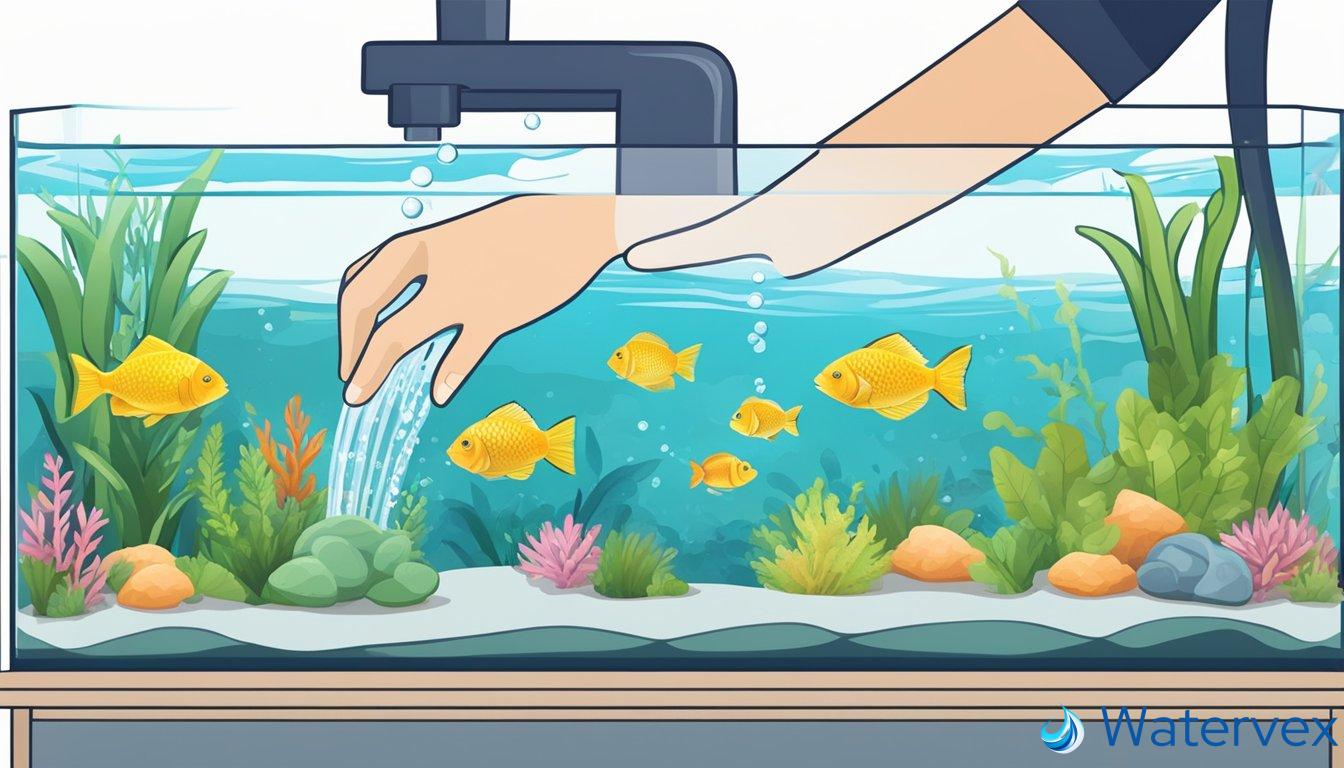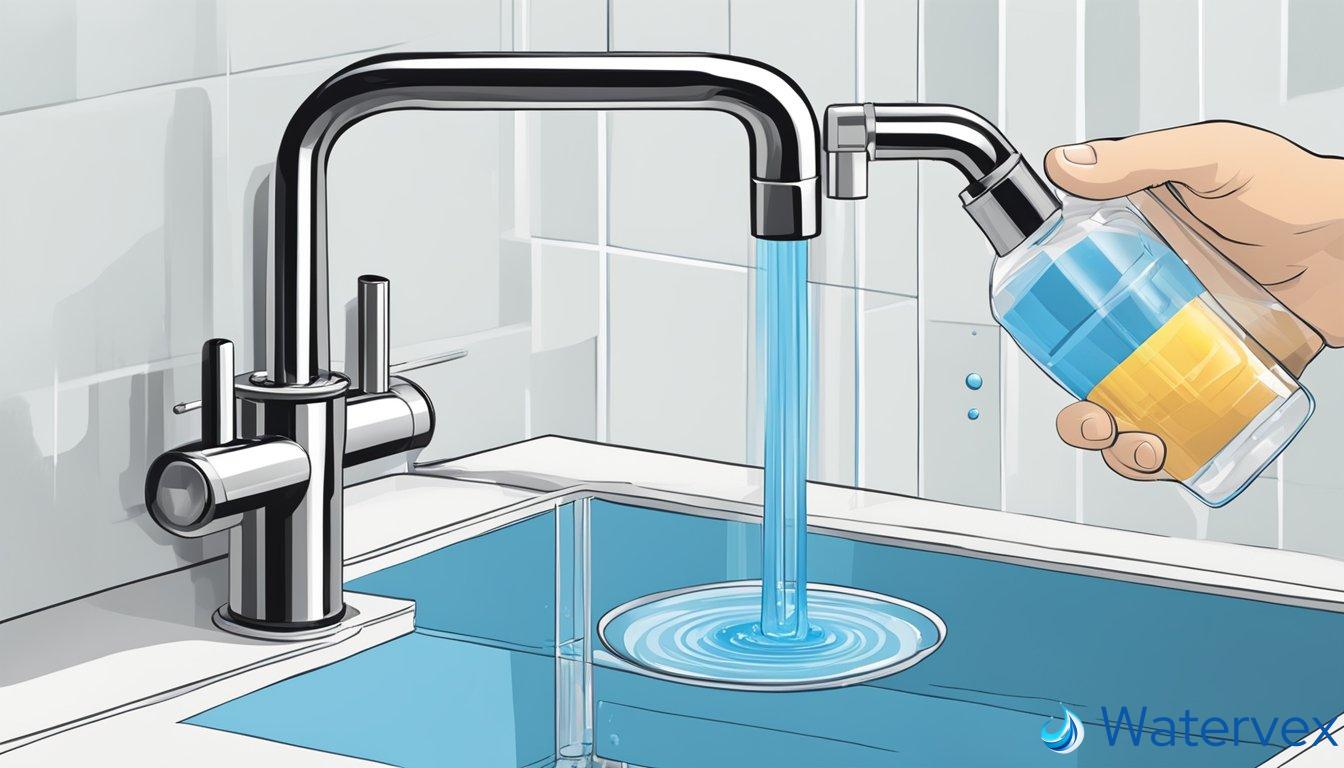Water conditioners are commonly used in managing aquariums and home water systems to improve the quality of the water. Many people utilize water conditioners with the intention of modifying various qualities of their water, including hardness and chlorine levels. However, when it comes to affecting alkalinity, the role of water conditioners is often misunderstood. Alkalinity, crucial for stability in water pH levels, might not be directly influenced by typical water conditioners as some would expect.

Understanding the implications of water conditioners on alkalinity involves a comprehensive look at what these products are designed to do. Alkalinity is a measure of water’s resistance to pH changes, mainly determined by the presence of bicarbonates, carbonates, and hydroxides. If altering water chemistry is your goal, it’s important to know that most water conditioners target substances like heavy metals and chlorine, not the ions that contribute to alkalinity.
Nevertheless, maintaining a balanced aquarium and ensuring the well-being of your aquatic life necessitates control over water parameters, including both alkalinity and pH. There are specific methods available for lowering alkalinity if that is your objective, ranging from water changes with low mineral content water sources like reverse osmosis (RO) or distilled water, to adding certain types of chemical media designed for this purpose.
Key Takeaways
- Water conditioners do not directly alter alkalinity as they mainly neutralize heavy metals and chlorine.
- Alkalinity is influenced by bicarbonate, carbonate, and hydroxide ions, not typically targeted by water conditioners.
- For altering alkalinity, consider options like using reverse osmosis water or adding chemicals specifically designed to manage alkalinity and pH levels.
Effects of Water Conditioners on Alkalinity Levels
Exploring how water conditioners interact with your aquarium’s environment, particularly alkalinity levels, can guide you to maintain a balanced habitat.
Water Conditioner’s Role in Alkalinity
Water conditioners are designed to make tap water safe for fish by removing harmful chemicals like chlorine and chloramine. However, their effect on alkalinity, which is the water’s ability to neutralize acids, is less direct. Alkalinity typically involves substances like carbonate and bicarbonate ions, which act as buffers against pH changes. While most water conditioners do not target alkalinity directly, some formulations contain substances that can modify carbonate hardness (KH), a component of total alkalinity. This alteration might lead to a change in pH levels, as alkalinity and pH are intricately linked.
To understand this, consider how buffering capacity works: it’s like a sponge soaking up added acid or alkaline substances, preventing drastic pH changes. A high total alkalinity means the water has a strong buffering capacity, making it resistant to pH swings. In instances where water conditioners add or remove carbonates, this buffering ‘sponge’ is affected, potentially altering pH value.
Adjusting Water’s pH with Water Conditioners
Some water conditioners have additives like phosphates or carbonate salts, such as sodium bicarbonate, which can influence your water’s pH level. For example, if you add a conditioner with a bicarbonate base to water with low alkalinity, it might increase the ppm (parts per million) of carbonates and raise the pH level towards a more alkaline state.
Conversely, water softeners, a type of conditioner designed to tackle hard water, often replace calcium ions with sodium. Since calcium carbonate is a key component of alkalinity, removing it could decrease the water’s buffering capacity and, as a result, lower pH levels under certain conditions. However, it’s important to note that not all changes in carbonate hardness result in a visible shift on the pH scale.
Aeration, which is sometimes a feature in advanced water conditioning devices, can also influence alkalinity by increasing the carbon dioxide in the water. This can lead to the formation of more carbonic acid, subtly impacting pH levels over time.
When adjusting water chemistry for your aquarium or home use, it’s essential to understand these nuances to ensure pH stability and maintain a healthy environment. Remember, the goal is to keep your water’s pH levels within a range that’s safe and comfortable for all inhabitants.
Improving Water Quality for Aquatic Life

When it comes to your aquarium, maintaining optimal water quality is crucial for the health of your fish. Water conditioners can play a role in this process, but it’s important to understand their effect on water parameters like alkalinity, which influences your tank’s overall water conditions.
Alkalinity, a measure of water’s ability to neutralize acids, is essential for a stable pH environment, benefiting both the fish and biological processes within your aquarium. While water conditioners are primarily used to remove chlorine and neutralize heavy metals, they may also impact the levels of dissolved minerals.
To maintain freshwater aquariums, consider the following steps:
Regular Water Changes: Replace a portion of your tank water with distilled water or water treated through reverse osmosis. This can reduce excess minerals contributing to high alkalinity.
Natural Methods: Introducing natural elements like driftwood can gradually lower alkalinity, while also providing aquarium inhabitants with a more natural and stress-free habitat.
Correct Salt Mixes: Saltwater aquarium owners need to ensure that the salt mix used does not elevate alkalinity beyond the required level for the marine species in their care.
Remember, abrupt changes in water chemistry can cause stress to your aquatic friends. Gradual adjustment is the key to creating a thriving environment. Regular monitoring with a reliable test kit will keep you informed about your aquarium water quality, helping you make precise adjustments to maintain the balance crucial for aquatic life.
Practical Methods for Adjusting Alkalinity and pH

Adjusting alkalinity and pH in your home’s water system can be a balancing act but is essential for the maintenance of a healthy and safe aquatic environment. Whether it’s in a pool or an aquarium, you’ll need to approach this with care to ensure a stable water chemistry.
Natural and Chemical pH Adjusters
Using natural pH adjusters like driftwood or peat moss can gradually release tannins into the water, which lower pH levels. For quicker adjustments, chemical additives such as soda ash (to raise pH) or muriatic acid (to lower pH) are often used. Baking soda is commonly utilized to marginally increase alkalinity without significantly affecting pH. When using chemicals, test kits or digital testers are crucial to measure the GH (general hardness), KH (carbonate hardness), and pH levels, ensuring they are within the desired range.
It’s also important to understand that while borate and phosphate can buffer pH, you should avoid overuse as they can lead to other water balance issues. A measured approach is necessary, often involving a titration method, to reach and maintain target levels effectively.
Equipment-based Water Conditioning
Reverse osmosis uses a semipermeable membrane to remove impurities, including magnesium, sulfate, and chlorine, which can lead to a more stable pH by reducing overall water hardness. This is because the process not only removes contaminants but also heavy metals that can cause fluctuations in water chemistry.
Moreover, certain water conditioners designed specifically for pools or aquariums incorporate carbonic acid to lower alkalinity, and help maintain stability by reducing GH and KH. Equipment like return lines in pools create turbulence, which can facilitate gas exchange and increase oxygen levels, thereby naturally increasing pH without chemicals. Remember to frequently check with a test kit to monitor the concentration of substances such as ammonia or cyA that reflect the current water condition.
Selecting the Right Conditioner for Your Water System

When faced with the task of reducing alkalinity in your water, it’s crucial to choose a water conditioner that aligns with both your water quality needs and household requirements. Selecting an inappropriate system may lead to unsatisfactory results or even exacerbate existing water issues.
Testing Your Water
Start by using a test kit to gauge the general hardness, total dissolved solids (TDS), and alkalinity of your water. This initial step will establish a baseline for your water’s composition, which is essential in determining the type of conditioner needed.
Understanding Conditioner Types
Water Softeners: Traditionally, water softeners exchange magnesium and calcium ions with sodium, benefiting appliances and preventing scale. However, they don’t lower alkalinity.
Reverse Osmosis (RO) Systems: These employ a semipermeable membrane to remove a broad spectrum of contaminants, including the reduction of alkalinity.
Specialized Conditioners: Some conditioners are designed to target specific issues. For instance, conditioners that focus on chlorine removal could be ideal if your main concern is taste and odor, rather than alkalinity.
Maintenance Requirements
Consider the maintenance demands of each system. RO filters generally need more frequent attention compared to simple water conditioners. Know that conditioners often require less intensive upkeep, making them a less demanding choice.
App Assistance
Today, several systems integrate with an app for monitoring water quality and maintenance needs, adding convenience to your water conditioning routine.
To encapsulate, align your water treatment strategy with your particular situation. Weigh the pros and cons carefully, considering maintenance, water quality goals, and the specific impurities of concern. A well-chosen conditioner will ensure that you maintain soft water, improve your water’s taste, and cater to the health and longevity of your household appliances.

